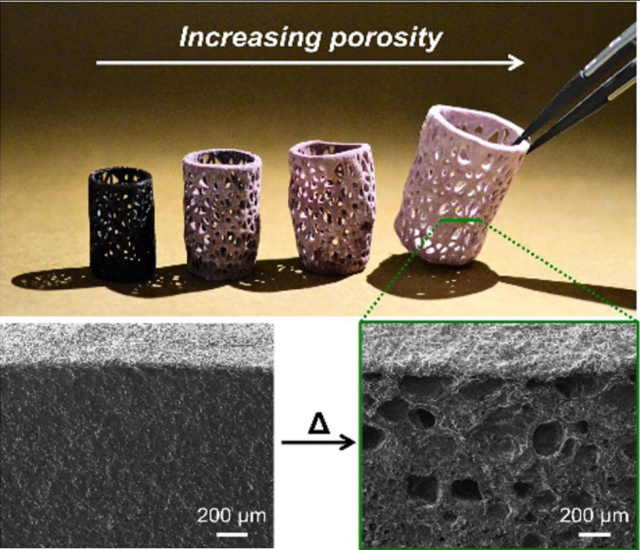
Three-Dimensional Photochemical Printing of Thermally Activated Polymer Foams
Soyoung E. Seo, Younghoon Kwon, Neil D. Dolinski, Caitlin S. Sample, Jeffrey L. Self, Christopher M. Bates, Megan T. Valentine, and Craig J. Hawker. . ACS Appl. Polym. Mater. 2021, 3(10):4984–4991.
Abstract
Facile, on-demand manufacturing of polymer foams with desirable properties such as mechanical strength, controlled porosity, and varied composition will enable the design of custom structural components for a variety of applications. A two-step process based on initial 3D photopolymerization and subsequent thermal processing is reported for creating thermally activated polymer foams with tunable pore size and volume fraction. The overall resin design incorporates photopolymerizable monomers (matrix) and thermally expandable microspheres (foaming agent) to produce microporosity throughout the resulting polymer network. During the microscopic expansion process, 3D printed polymeric parts irreversibly expand while retaining their overall shape. Low-density foams with a porosity up to 85% have been produced that exhibit increased specific modulus and energy dissipation when compared to the bulk matrix and unexpanded 3D printed parts. In addition, by tuning the cross-link density of the matrix network, it is possible to control pore size and material mechanics. This approach produces thermally activated polymer foams of complex geometries with programmed porosity and enhanced mechanical properties with the two-step process also providing local control over the spatial distribution of pore sizes through multimaterial 3D printing.